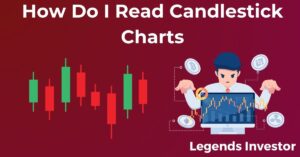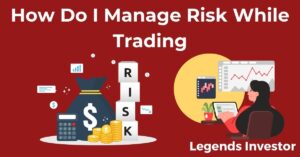Introduction to Technical Analysis in Trading
Explaining the Foundation of Technical Analysis
Technical analysis focuses on historical price movements and trading volumes to forecast future market behavior. It relies on the premise that price trends and patterns repeat over time due to market psychology.
Understanding the Importance of Market Trends and Patterns
Recognizing trends and patterns enables traders to anticipate market direction. This helps in identifying opportunities to enter or exit trades at optimal points.
How Technical Indicators Assist in Informed Trading Decisions
Indicators provide objective data that simplify decision-making by highlighting trends, momentum, and potential reversals.
Top Technical Indicators: An Overview
Defining What Constitutes a ‘Best’ Indicator for Trading
The best indicators are those that align with your trading strategy and objectives, whether trend-following, momentum-based, or volatility-driven.
Identifying Different Categories of Technical Indicators
- Trend Indicators: Highlight market direction (e.g., Moving Averages).
- Momentum Indicators: Measure the speed of price movements (e.g., RSI).
- Volume Indicators: Analyze the strength behind price moves (e.g., OBV).
- Volatility Indicators: Assess market sentiment and price range (e.g., Bollinger Bands).
Briefly Introducing the Top Indicators Discussed
We will explore moving averages, momentum oscillators, volume-based tools, and volatility indicators.
Moving Averages: The Trend Follower’s Tool
Understanding Moving Averages: Simple and Exponential
- Simple Moving Average (SMA): Calculates the average closing price over a specified period.
- Exponential Moving Average (EMA): Gives more weight to recent prices, making it more responsive to price changes.
How Moving Averages Signal Entry and Exit Points
- Crossovers: When a shorter moving average crosses above a longer one, it signals a buy; crossing below indicates a sell.
- Support and Resistance: Moving averages can act as dynamic levels of support and resistance.
Real-World Applications and Limitations
Moving averages work well in trending markets but may produce false signals in choppy, sideways markets.
Momentum Oscillators: Measuring the Speed of the Market
Explaining the Concept of Momentum in Trading
Momentum measures the rate of price change, indicating whether a trend is accelerating or decelerating.
The Role of Oscillators Like RSI and Stochastics
- Relative Strength Index (RSI): Identifies overbought (above 70) or oversold (below 30) conditions.
- Stochastic Oscillator: Compares closing prices to price ranges over a specific period, signaling potential reversals.
Interpreting Overbought and Oversold Conditions
Overbought conditions suggest a potential price decline, while oversold conditions may indicate an upcoming price increase.
The Power of Volume: Volume-Based Indicators
Why Volume Is Crucial in Market Analysis
Volume reflects the intensity of buying or selling, confirming price trends and potential reversals.
Introducing Indicators Like OBV and Chaikin Money Flow
- On-Balance Volume (OBV): Tracks cumulative buying and selling pressure based on volume changes.
- Chaikin Money Flow (CMF): Measures the flow of money into or out of an asset over time.
How to Combine Volume with Price Action for Better Predictions
High volume during price breakouts signals strong market participation, increasing the likelihood of trend continuation.
Volatility Indicators: Gauging Market Sentiment
The Significance of Volatility in Assessing Market Dynamics
Volatility indicates the degree of price variation, helping traders understand market sentiment and risk.
Using Indicators Like Bollinger Bands and Average True Range
- Bollinger Bands: Measure volatility and identify overbought or oversold conditions when prices hit the upper or lower bands.
- Average True Range (ATR): Quantifies market volatility, aiding in setting stop-loss levels and position sizing.
Volatility as an Indicator of Potential Market Turns
Sudden spikes in volatility often precede significant price movements, signaling potential trend reversals or breakouts.
Chart Patterns and Price Formations
The Essence of Visual Patterns in Technical Analysis
Chart patterns visually represent the battle between buyers and sellers, offering predictive insights into market direction.
Key Patterns Such as Head and Shoulders, Triangles, and Flags
- Head and Shoulders: Indicates trend reversals.
- Triangles: Suggest continuation or breakout depending on the type (ascending, descending, symmetrical).
- Flags: Represent brief consolidations before trend continuation.
The Predictive Power of Chart Patterns
Accurately identifying patterns can help forecast price targets and entry/exit points.
Putting It All Together: Combining Indicators for Optimal Strategy
The Importance of Using a Blend of Indicators
Combining trend, momentum, and volume indicators provides a holistic view of market conditions.
Avoiding the Pitfalls of ‘Indicator Overload’
Using too many indicators can lead to conflicting signals. Stick to a manageable number that complements your strategy.
Examples of Effective Indicator Combinations
- Moving averages with RSI for trend confirmation.
- Bollinger Bands with OBV to validate breakouts.
Conclusion: Navigating the Markets with Technical Indicators
Recapping the Value of Technical Indicators in Trading Strategy
Technical indicators simplify market analysis, aiding in identifying trends, momentum, and potential reversals.
Encouraging Continuous Learning and Adaptation
The market is ever-changing. Regularly update your knowledge and refine strategies to remain effective.
Parting Advice for Aspiring and Experienced Traders
Patience and discipline are key. Combine technical analysis with sound risk management to enhance trading success.



